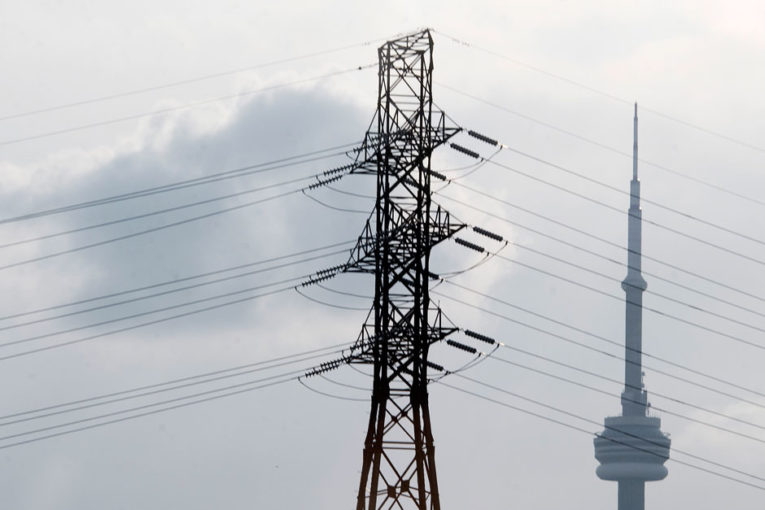
Ontario has begun overhauling oversight of electricity and natural gas companies in the province after 2017 turned into yet another contentious year for its energy sector.
Ontario’s Liberal government said last week it would follow the example of the federal government — who embarked on a review of the National Energy Board — and launch a review of the Ontario Energy Board, which is responsible for setting rates and approving infrastructure projects for the electricity and natural gas industries.
The review, the government said, will be led by Richard Dicerni, a former head of Ontario Power Generation Inc., the largest electricity producer in the province. Dicerni will lead a panel to probe the OEB’s structure, resources, and how it can protect consumers in an evolving energy sector, a release said.
The panel will report back to the government by the end of 2018, after the the province’s next election, which is scheduled for June.
“This is too important to wait until the next government, to the next mandate,” Ontario Energy Minister Glenn Thibeault said in an interview with the Financial Post on Wednesday. “Whoever the voters choose, this really needs to get done to make sure that we are prepared for the future.”
The province also issued an update of its long-term energy plan this year, which said the government would “look to the OEB to identify additional tools and powers that could be used to make utilities more accountable to their customers, promote efficiencies and cost reductions, encourage partnerships, and ensure regulatory processes are cost-effective and streamlined, while also accommodating changing utility business models.”
The OEB released a “strategic blueprint” for 2017 to 2022 on Monday that suggests the regulator could shake up how utilities are paid and how the energy grid is utilized. The OEB’s oversight extends to some publicly traded companies, such as Hydro One Ltd. and Enbridge Inc., that do business in the province.
“We are seeing utilities engage more effectively with their customers and undertake more robust system planning,” the OEB’s blueprint said. “But we are less confident that we are yet seeing the stronger focus on longer-term value for consumers that we had expected.”
Thibeault’s remarks and the OEB’s vision follow a recent report from the Auditor General of Ontario on oversight of the province’s electricity market, which stated that “The Ontario Energy Board could have done more to protect ratepayers’ interests,” as it could have blocked proposed rule changes against the best interests of consumers, but has not done so.
The OEB’s blueprint puts the need to “sharpen” its focus on consumer value at the top of its list of priorities. The way the watchdog plans to do so includes “remunerating utilities in ways that strengthen their focus on long-term value and least-cost solutions.”
The OEB noted that other regulators have been weighing “new approaches to the remuneration of utilities, including ways of treating traditional capital investments versus non-capital expenditures, that might better encourage the adoption of innovative and least-cost solutions by utilities.”
“The way the OEB remunerates utilities can influence the degree of innovation achieved by utilities in their operations and services arrangements with consumers,” the blueprint adds.
The OEB is responsible for approving major new electricity transmission lines and natural gas pipelines, as well as approving any mergers and acquisitions that may fall under its purview.
“In a very real way, the distribution sector may now be at a point which the telecommunications companies occupied in the late 1980s,” Thibeault said last week in a speech to the Empire Club, according to a copy of his remarks.
Ontario has also adopted a cap-and-trade system to price, and try to reduce, carbon emissions, efforts the OEB sees as driving innovation in the energy sector.
“That trend, together with measures to increase the resilience of energy infrastructure, may call for new investment in networks or the redeployment of infrastructure,” the OEB blueprint said.
On Dec. 1, the OEB issued a notice saying that Enbridge, Union Gas Ltd. and EPCOR Natural Gas Limited Partnership had applied for approval to recover cap-and-trade-related costs for 2018, which would raise rates by 40 to 50 cents on average per month starting in January.
The OEB also said it aims to support cost-sharing among utilities, ensuring consumers are informed about their rights and options, and address the sector’s evolution with its existing tools.
“It is premature to sanction or mandate, as some regulators have, a particular new business model for utilities or a specific new ‘platform’ to accelerate the deployment of distributed resources – picking a particular model or platform at this point would impede innovation,” the blueprint said. “However, the complexity of the changes afoot in the Ontario energy sector suggest that a ‘wait-and-see’ approach is not sufficient for Ontario – it would simply prolong uncertainty for both incumbents and new service providers.”
[email protected]
Twitter: @geoffzochodne
You can read more of the news on source
